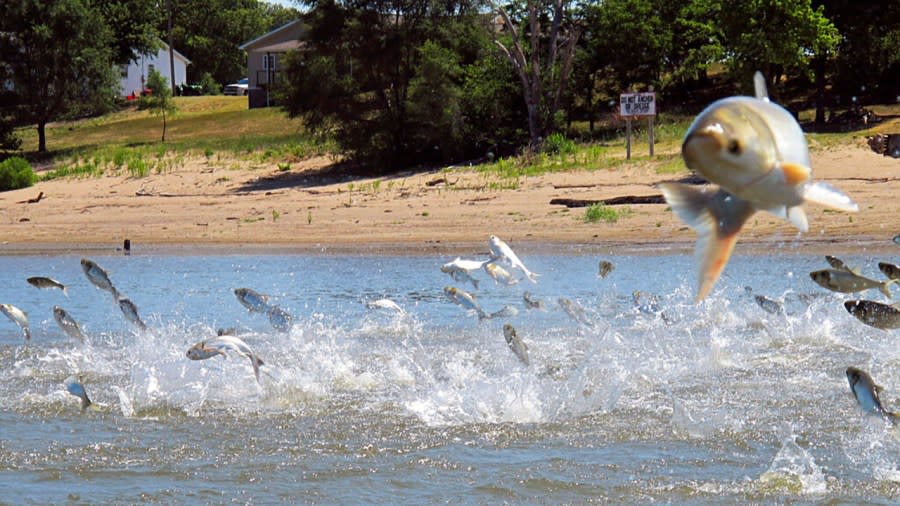Report: Funding fight triggers stalemate over invasive carp project
- Oops!Something went wrong.Please try again later.
GRAND RAPIDS, Mich. (WOOD) — Upgrades to the Brandon Road Lock and Dam in Illinois is considered the key to preventing invasive carp from entering the Great Lakes. But so far, the grand plans have made little progress.
Documents obtained by WBEZ in Chicago show that state officials in Illinois will only proceed “on an incremental basis” unless the U.S. Army Corps of Engineers commits to using federal funds first.
The Brandon Road Interbasin Project, which was first developed in 2019, is expected to cost roughly $1.15 billion dollars. The plan “involves a layered system of structural and non-structural control measures” to prevent invasive carp or any other aquatic pest from entering the Great Lakes through the Illinois Waterway, where invasive carp already have an established population.
The two state governments were expected to cover approximately 10% of the total costs. As of March 2023, Illinois had committed $50 million and Michigan had committed $64 million, with federal money covering the rest.
Michigan DNR finds positives after invasive carp found past electric barriers
So far, $226 million in federal funds have been committed to the project for the first phases of design and construction, but they “have been on standby since 2022,” per WBEZ.
In his latest proposal, sent earlier this month, Illinois Gov. JB Pritzker wants all available federal funds to be used first to “avoid potential reallocation of the federal funds to other projects in the nation.”

“While the federal government has determined this project is of the highest priority, the taxpayers of Illinois and Michigan should not be the only states to carry the burden of the non-federal share of funding when the entire Great Lakes region will certainly experience the devastating impact of inaction,” Pritzker wrote.
Invasive carp — formerly known as Asian carp and also called copi — are considered a major threat to the Great Lakes because they could upend the natural ecosystem. Invasive carp are voracious eaters and would devour the food sources for several popular Great Lakes fish, including walleye and rainbow trout, key players in the region’s billion-dollar fishing industry.
Beyond Brandon Road: Monitoring 18 other points invasive carp could enter Great Lakes
Invasive carp were used as a tool in the 1970s, controlling algae, weed and parasite growth on aquatic farms. But the fish eventually made their way into the Mississippi River basin and now dominate that ecosystem.
The U.S. Army Corps of Engineers has worked with environmental agencies for years to monitor the fish in the Mississippi River basin and ensure they don’t make it to the Great Lakes. The two systems only have one permanent connection point — the Chicago-Area Waterway System.
There are already several tools in place, including an existing electric barrier that costs Illinois taxpayers approximately $15 million each year.
For the latest news, weather, sports, and streaming video, head to WOODTV.com.

